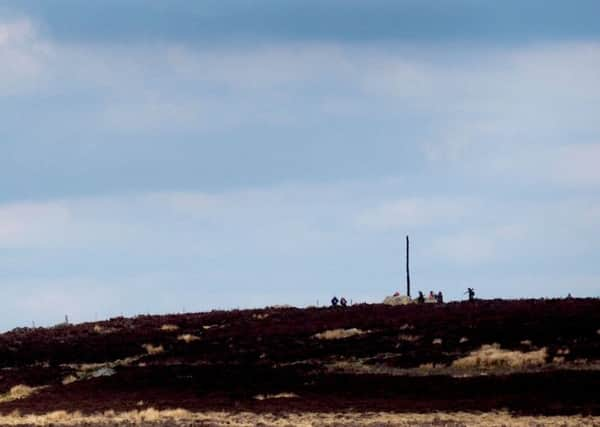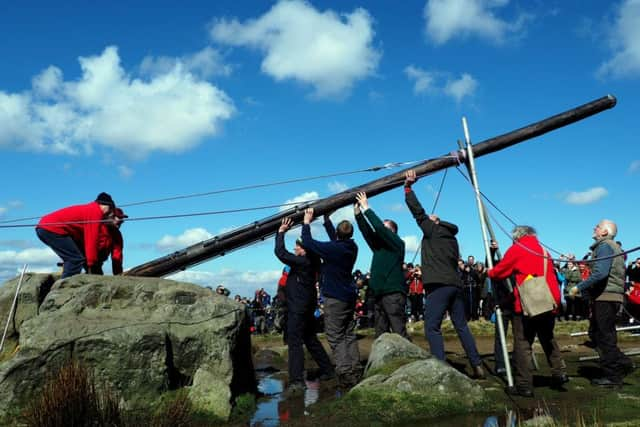Documenting historic Peak District pole's story for the ages


So the publication of a new book documenting the long history of Stanage Pole – once an important boundary marker, and now a place for people to meet, pause for a bite to eat or appreciate the far-reaching views – goes some way to properly explaining the pillar’s origins, as well as showing how its future has been safeguarded for years to come.
“In a flat landscape, to have something like that standing up really does place you,” said John Horscroft, chair of the Stanage Forum, which is funding and distributing the book. “You can say: ‘I know where I am now’. On a clear day you can see it from Derwent Edge.”


Advertisement
Hide AdAdvertisement
Hide AdJohn said the book – called Stanage Pole: A Brief History – was ‘definitely the first about the pole’ and that it pulled together detailed knowledge from the likes of Bill Gordon, the warden on the Stanage-North Lees estate, and Stella Maguire, of the Peak Park Authority. There are reproductions of ‘some cracking little maps’, he added, as well as pictures from the Sheffield Archives and old editions of the Telegraph.
However, it’s still unclear when exactly the first pole was put up high on the gritstone escarpment of Stanage Edge – there is no record of one in 1656, when the ancient limits of the Manor of Hathersage were fixed; instead, a 1725 survey is the earliest known depiction.
It is thought the succession of replacement poles – vandalism and damage has occurred several times over the centuries – marks the frontier between the ancient kingdoms of Mercia and Northumbria, as well as the boundary of the old Northumbrian ‘shire’, Hallamshire. Today it indicates the spot where Derbyshire and South Yorkshire meet, as well as the boundary of land owned by the Peak Park and Sheffield Council.
The book was prompted by the latest replacement pole, which was hoisted into place a year ago.


Advertisement
Hide AdAdvertisement
Hide AdA resident had spotted its previous incarnation leaning dangerously, having started to rot, so park staff removed it.
The old mast was found to be a telegraph pole cut in half lengthways – the more appropriate substitute was a tall, straight larch grown on the Jubilee plantations near Stanage. The sturdy larch was inserted into an ‘iron stone’ engraved with distances to nearby places and set into the boulders, covered with graffiti from down the ages, that surround the pole.
“It’s probably appeared on more photos that any other landmark in the Peak District,” said John.
“Obviously we can’t be sure exactly when the first pole went up, but the track was a way of getting from the Hope Valley villages over to Sheffield. It would have been a regular route for people.”
Advertisement
Hide AdAdvertisement
Hide AdAs a navigational aid in the days before GPS the pole would have been impeccable.
“It would have been a great place to get lost in a snowstorm,” John reflected.
It was vital to document the story in case the details were lost in the mists of time, he added. “There’s a tremendous sense of ownership within the Sheffield community of Stanage-North Lees. They very much see it as their back garden. Sheffield gets the outdoors. We’re not just the outdoor city in name.”
Volunteers will be selling books at the pole, or the end of Long Causeway, from 11am to 3pm on Saturday and Sunday. A donation of £2.50 is suggested per copy, with proceeds to Stanage-North Lees’ upkeep, via Stanage Forum. Books are also on sale at the Outside shop in Hathersage, the Climbing Works and from Sheffield libraries.